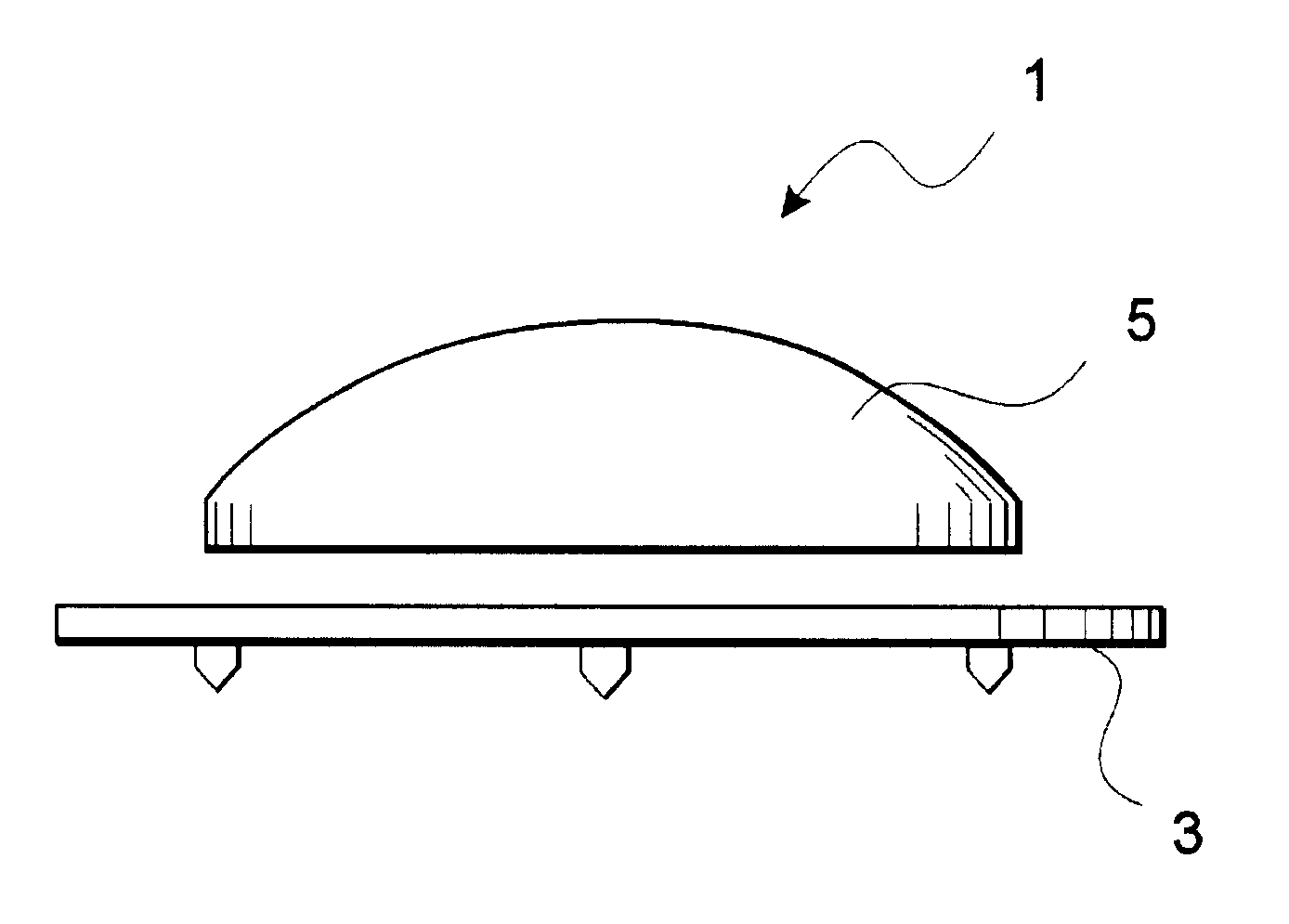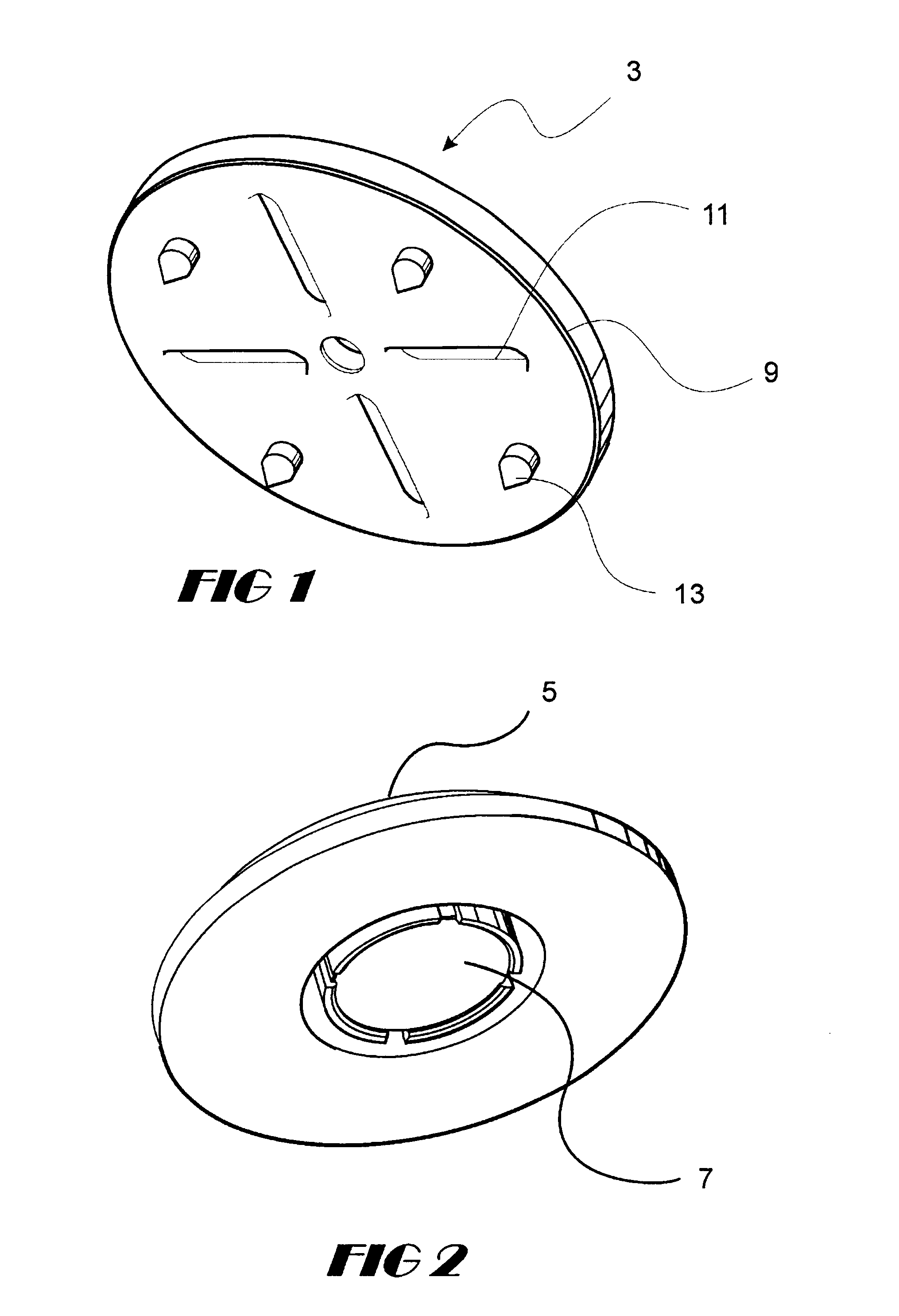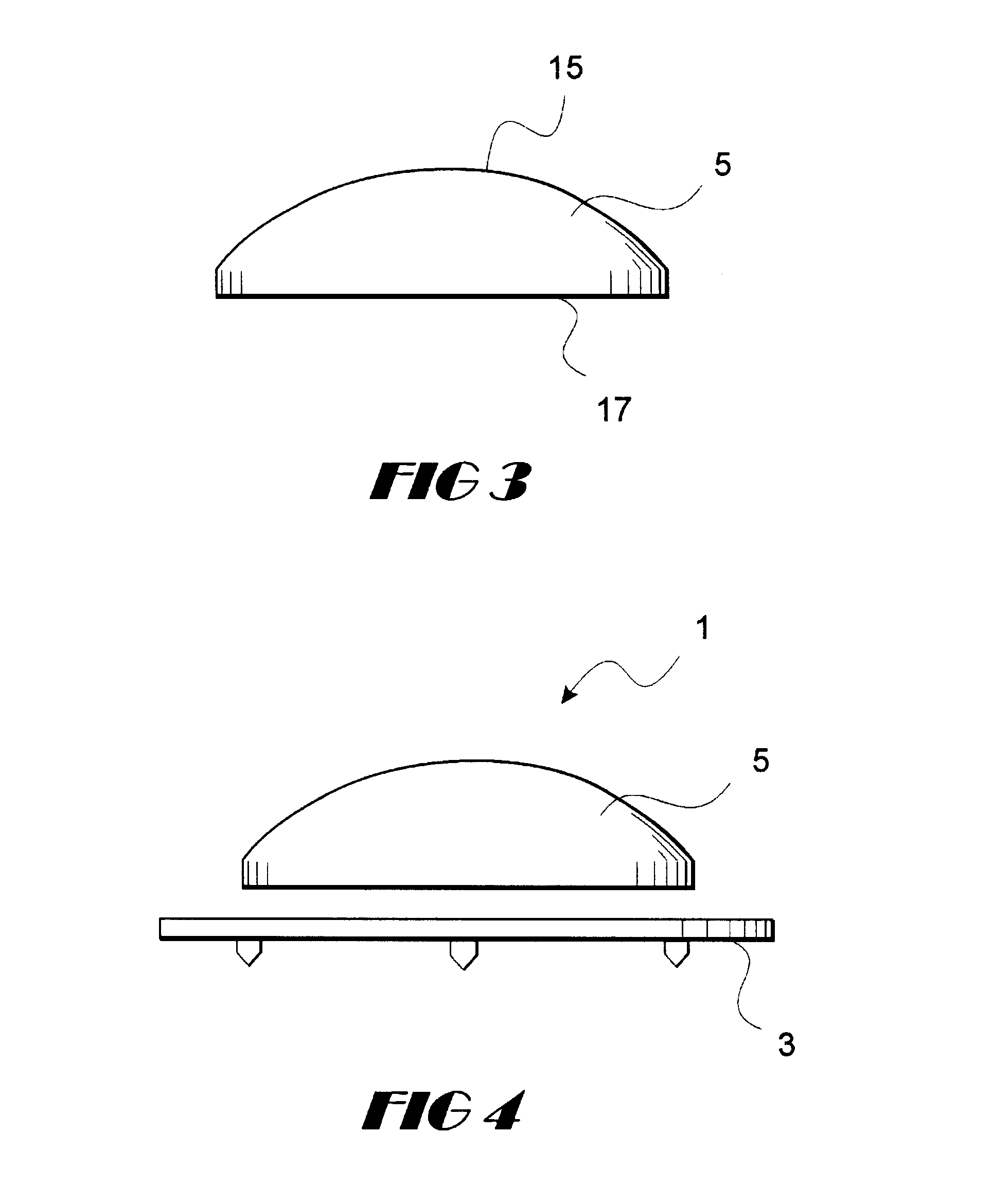Patellar alignment device
a technology for patellar and spondylose veins, applied in the field of patellar alignment devices, can solve the problems of patella prosthesis movement, patella prosthesis movement, and inability to accurately locate the proper position, etc., and achieve the effect of accurate positioning the proper position
- Summary
- Abstract
- Description
- Claims
- Application Information
AI Technical Summary
Benefits of technology
Problems solved by technology
Method used
Image
Examples
Embodiment Construction
Referring now to FIGS. 1-4, a preferred embodiment of the present patellar alignment device 1 is shown. As indicated in the drawings, the self-aligning patella trial device 1 of the present invention comprises a baseplate 3 for attaching to the posterior portion of a patella (not shown) and a mobile component 5 which is removably attached to the baseplate 3 preferably by magnets 7.
The baseplate 3 preferably is a flat circular plate 9 having slots 11, preferably radially oriented, in the baseplate 3. The slots 11 allow a surgeon to mark the patella during the knee surgery for proper placement of the final prosthetic device. One side of the flat plate 9 contains small spikes 13 for temporary attachment to the posterior portion of the patella. As shown in FIG. 5, outside prongs 14 may be used for added support and positioning of the baseplate 3. However, any suitable means may be used for attaching the baseplate 3 to the patella for purposes of performing the trial, such as screws, spr...
PUM
 Login to View More
Login to View More Abstract
Description
Claims
Application Information
 Login to View More
Login to View More - R&D
- Intellectual Property
- Life Sciences
- Materials
- Tech Scout
- Unparalleled Data Quality
- Higher Quality Content
- 60% Fewer Hallucinations
Browse by: Latest US Patents, China's latest patents, Technical Efficacy Thesaurus, Application Domain, Technology Topic, Popular Technical Reports.
© 2025 PatSnap. All rights reserved.Legal|Privacy policy|Modern Slavery Act Transparency Statement|Sitemap|About US| Contact US: help@patsnap.com



